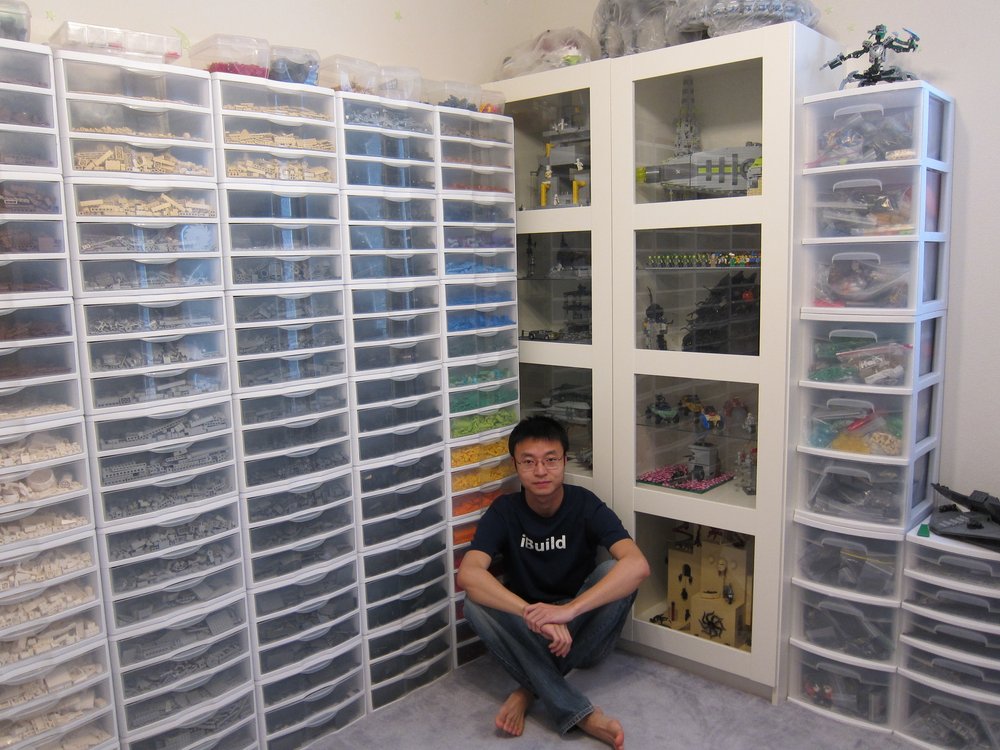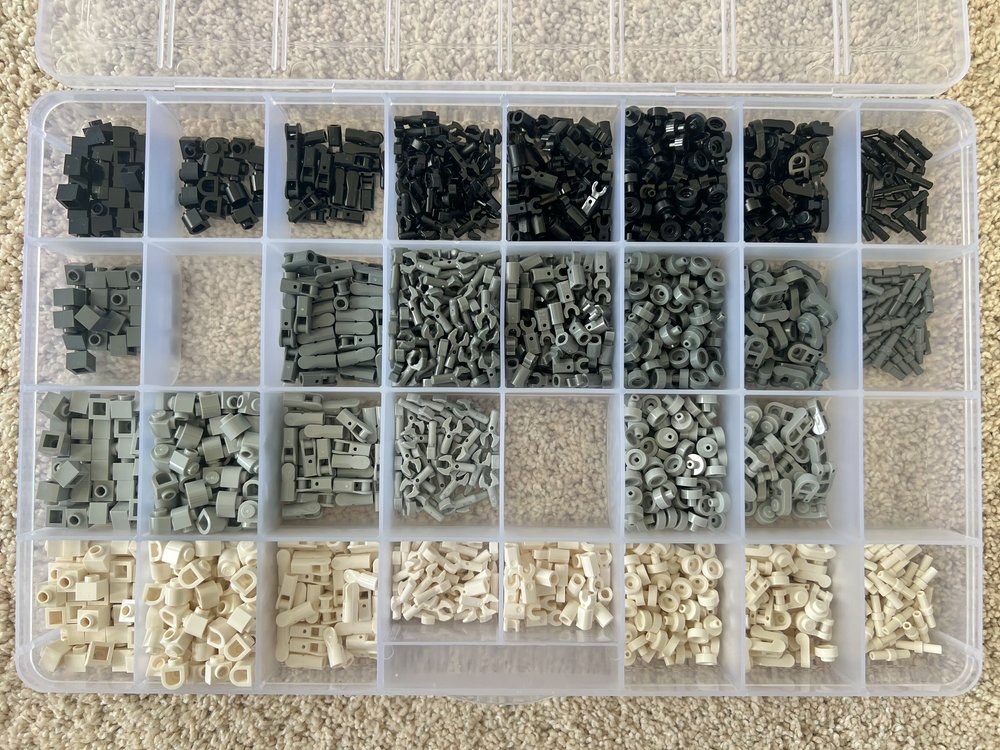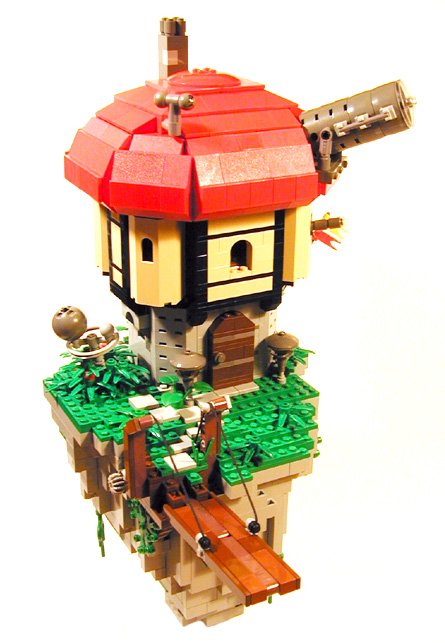Reflecting On 20 Years In The Online LEGO Community
Have you ever wondered what the LEGO community was like in the 2000s? Today’s guest writer and veteran builder Nannan Zhang shares his thoughts on building and sharing MOCs online for the past 20 years.
Humble Beginnings in a Humble Community Space
2004—In that year, Flickr was launched, MOCpages celebrated its first birthday, BrickLink turned three, and Brickshelf was the big brother of the budding community at five years old. It was on a slow day during my high school summer break that I typed the word “lego” into my search browser. What happened after that changed my life.
I discovered the online LEGO community by stumbling upon Brickshelf and MOCpages. For the first time, I saw giant spaceships, massive castles, large LEGO dioramas, and more. Enthralled by awesome creations from AFOLs, I embarked on an adventure to achieve a high level of skill and technique in MOC building so that I, too, could inspire others. I created an account on Brickshelf and MOCpages and shared my first MOCs with the world in August 2004.

Me in my old Lego room in 2011.
For the next two decades, I would visit LEGO fan sites regularly and build MOCs whenever I could. I kept building, even with limited access to my collection throughout the ten years I was completing my medical training. In this article, I’d like to share my reflections on the evolution of MOCs, builders, and the community.
High Bars and Low Attention Spans
I frequently think about how building LEGO has gotten much, much easier since I started. LEGO releases hundreds of new elements and dozens of new molds each year. As a result, builders can create new shapes that were previously difficult or impossible, using colors that didn’t exist 10-15 years ago. MOCs have become more colorful and realistic, and the bar for an exceptional MOC keeps getting higher. In the late 2000s, a private forum called Builders Lounge showcased the works of many experienced builders at the time on their Brickshelf account.
As you explore these legacy MOCs, you may notice many have lost their luster over time. Most of these builders are no longer actively posting, and if some were to return to the hobby after a long hiatus, they would likely encounter a slew of unfamiliar parts they didn’t have access to. As my own collection expands, I no longer buy sets to grow my inventory. Instead, I selectively purchase new parts from the online Pick a Brick or BrickLink to stock up on new elements.

a box of useful parts, most of which were released in the past few years.
The presentation of MOCs has also reached new standards. In the early 2000s, if you shot your MOC in front of a white background, it instantly elevated your presentation and, in turn, you as a builder. Ryan Wood—whose sci-fi builds garnered much attention—was one of the first builders I remember who photographed his builds using a white backdrop. The white background became a reliable standard until the early 2010s when colored backgrounds gradually became more popular.

I remember seeing Ryan Wood’s Shroom Rock when it was posted in 2005. This was both an innovative and well-photographed MOC at the time.
Even so, there were a few from the late 2000s who were known for their unique presentation styles, such as Alex Eylar’s ambient photography or Chris McVeigh’s intricately crafted shots. These styles would become much more popular in part due to improvements in editing software. More recently, digital builds and high-quality renders have become ubiquitous, especially on LEGO Ideas. Sometimes you have to second guess whether a MOC these days is a physical creation or a render.
In the past, there was a stark contrast between the aesthetics of a LEGO set and what an experienced builder could make. One reason people built MOCs was to create what LEGO couldn’t in a set. With the influx of 18+ sets, LEGO sets have significantly improved and rival many a great MOC today, and some AFOLs are simply content with displaying high-quality sets produced by The LEGO Group.
With the improvement of both MOCs and sets over the years, consumers and those in the community have become more jaded, being spoiled with high-quality creations from both fans and The LEGO Group. It doesn’t help that increased engagement with smartphones and digital devices has shortened our collective attention span. It feels harder than ever to get others excited over a great build when the next one is just a swipe away. Maybe my age is starting to show, but I missed the days when people really engaged with a photo (you’ll only understand if you view that link on a desktop browser, but it looks like the below with each box being a comment when you hover).

Tyler Clite's Bullet Dozer from 2007.
Going forward, I ponder how builders can push the medium and create something impactful by chasing the elusive wow factor. What makes a MOC stand out on a table amongst a thousand other builds at a LEGO convention? What makes people pause their scrolling and zoom in to see the details on Flickr or Instagram? The late nnenn drafted a short piece on creativity in 2009, prompting a lengthy discussion from the community. The same burning question still lingers today, continuously being answered by builders across different sects of the community.
The People You Meet and The Friends Who’ve Moved On
I consider LEGO a solitary hobby, having spent most of my time building alone. And yet, it is a hobby that I cannot sustain without the presence of a community to share the fruits of my creativity and be inspired by others. When I attended my first LEGO convention, Brickworld 2008, I already knew many names in the community, and some knew me as well. The convention experience affirmed my love of the hobby of finding others to talk about our common interests. I would continue to attend Brickworld for five years in a row, along with a handful of other conventions in between. I even made perhaps the first ever LEGO convention walkthrough video when I met Tyler Clites at Brickworld 2009.
During those years, I made lasting friendships, and going to conventions became less about seeing the creations and more about seeing my friends. When medical school became busy, I stopped traveling for my hobby. I popped my head in the door to attend Brickworld 2018 and, most recently, in 2023 and 2024 after I’ve settled down in life. In 2023, I reconnected with a few friends whom I hadn’t seen in over a decade, and as I reflected on this experience, I wondered where others have been.

The T-shirt from my first convention at Brickworld 2008 signed by friends.
Simon Liu, the embodiment of the spirit of the LEGO community, once mentioned that a generation of builders turns over about every seven years. By that definition, I’m old enough to be a granddad. In my observations, people move on more often than they remain in the hobby, yet there are enough dinosaurs around that we can still tell tales of the dark ages when we had to build SNOT on headlight bricks instead of the standard brick with stud on one side (which wasn’t released until 2009 and caused me to panic buy over a thousand headlight bricks thinking they were going to be replaced).
There seems to be a bimodal distribution in the age of online LEGO fans, with a peak in the late teens and early twenties followed by a dip and another peak after age 40. As most people settle down in life by the end of their twenties and in their thirties, LEGO commonly takes a back seat to real-life milestones. Then there’s a return of the AFOL whose kids have entered the LEGO age, who then rediscovers the hobby through their children.
As I watch the coming and going of builders in the community, I see parts of myself that have come and gone in my MOCs over the years. This constant change inspired me to create a commemorative model for my 20th anniversary in the online LEGO community. You can read about the symbolism of this build on Flickr.

Going Mainstream and Moving Underground
The online LEGO community changed drastically during my participation in the past two decades. In the 2000s, Brickshelf and MOCpages were the cornerstone galleries where people shared their MOCs, and discussions continued in forums catered to specific interests. We had to scroll past avatars and signatures that took up more real estate than the comment itself, which were still longer and more meaningful than the fire emojis of Instagram. Flickr saw its rise in the late 2000s, particularly in 2007 during a scare about Brickshelf shutting down.
Engagement on Flickr was very different back then, characterized by more comments than “faves.” As time went on, Flickr took over as the most popular LEGO gallery in the 2010s. Brickshelf faded into antiquity due to the lack of interaction capabilities, and MOCpages grew stagnant due to a lack of resources devoted to its community. When MOCpages permanently went down in 2020, a significant piece of the online LEGO community’s history spanning 17 years was lost.

My oldest screenshot of getting MOC of the Day on MOCpages on 11/9/07
Around the same time, Flickr was approaching senescence, namely caused by the continuously rising cost of the pro subscription, the clunky mobile app, and limiting free account users to only having 1,000 photos and videos in 2019. More or less in response to Flickr’s anti-consumer changes, Instagram began to gain popularity as a mainstream social media platform, drawing LEGO fans to the site to post their MOCs. As someone who will go down with Flickr’s sinking ship and never trade the ability to view photos in high resolution for a few more likes, I have reluctantly accepted Instagram’s current place as the most visible MOC sharing platform.
The LEGO community has entered mainstream culture following LEGO’s heavy promotion and catering of products for adults. In my own observations I have seen a fair number of LEGO sets in offices and the background of Zoom calls. Stories about an outsider interacting with the “quirky world” of the LEGO community seem less valid today than it did 15 years ago (maybe we were quirky back then).

Where should you post your MOCs online?
Despite mainstream recognition of LEGO as a hobby for adults, the LEGO community seems more fragmented than ever. Individual LEGO fan communities are found all over the internet, from the giants of social media like Instagram, YouTube, Reddit, and Facebook to websites that cater to LEGO fans interested in a particular theme. Without a dedicated central hub such as Brickshelf, MOCpages, or even Flickr, many builders have joined communities on Discord away from the public’s eye to partake in the hobby with smaller groups of like-minded individuals and close friends. Where things go from here is uncertain, but based on my experiences, I can attest that change is the only constant.
In Conclusion
In the past two decades of being in the online LEGO community, I have seen unprecedented changes in MOC-building along with the coming and going of many builders and entire communities. I spent the past year setting up my new LEGO room and getting back into building regularly after returning from a 11-year dim age where I had limited access to my collection.

My Lego room in August 2024.
The landscape over the past 20 years has changed, but I remain motivated by the desire to build at my best and inspire others. To me, LEGO is a lifelong hobby, and I look forward to what the next decade will bring.
When did you discover the online LEGO community? Are you just finding out today? Let us know in the comments below!
Do you want to help BrickNerd continue publishing articles like this one? Become a top patron like Charlie Stephens, Marc & Liz Puleo, Paige Mueller, Rob Klingberg from Brickstuff, John & Joshua Hanlon from Beyond the Brick, Megan Lum, Andy Price, Lukas Kurth from StoneWars, Wayne Tyler, Monica Innis, Dan Church, and Roxanne Baxter to show your support, get early access, exclusive swag and more.

